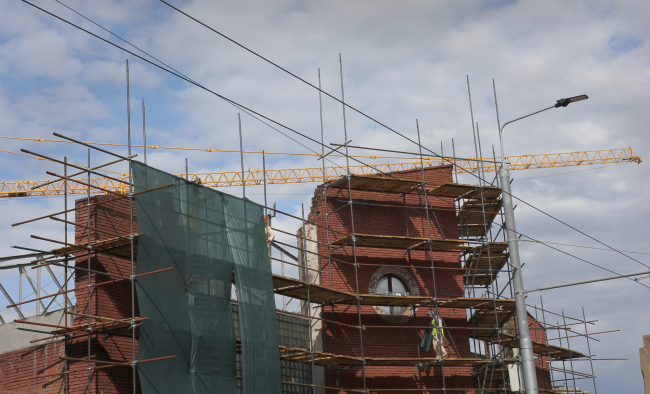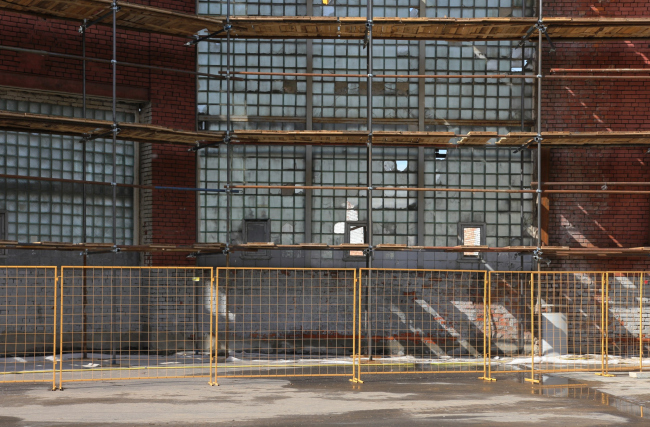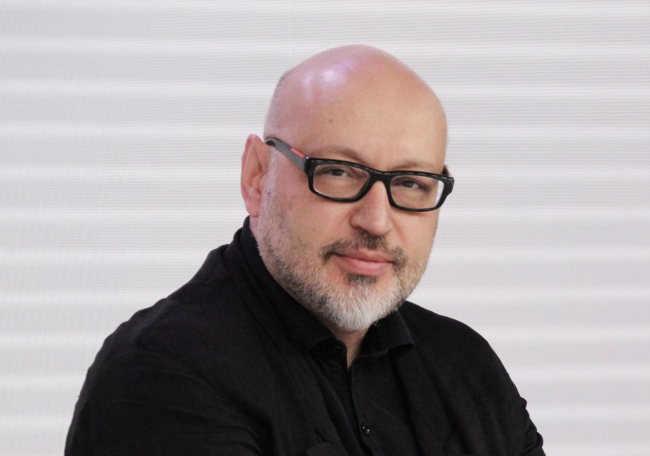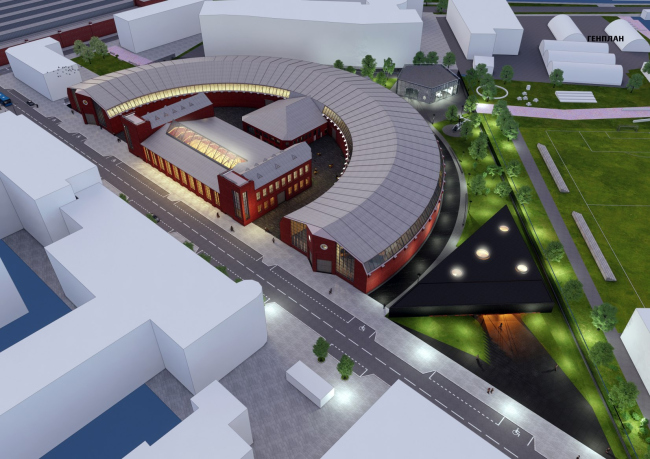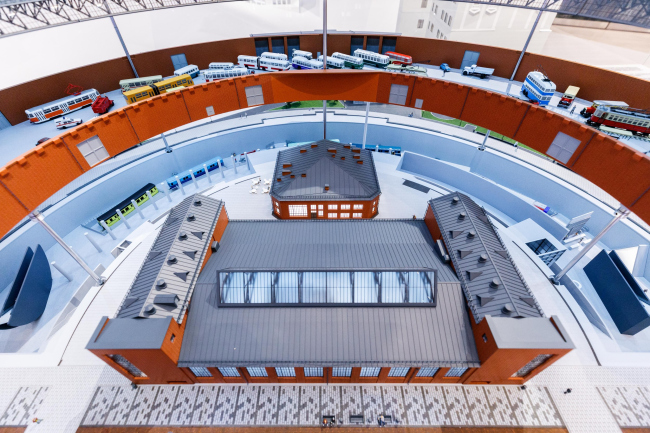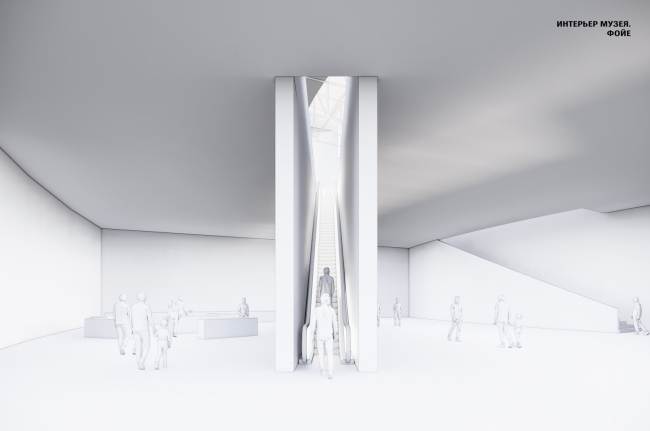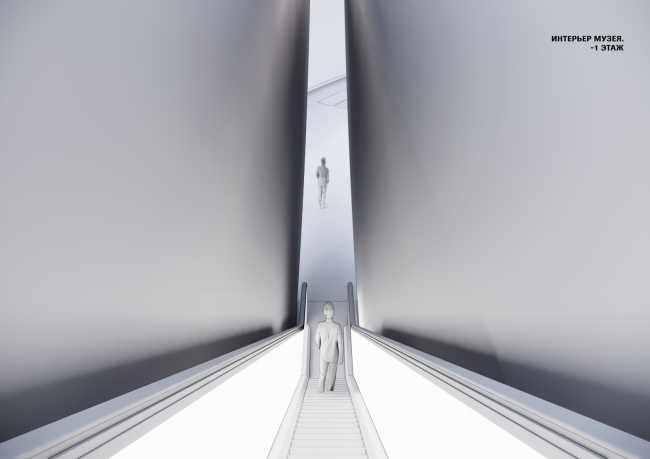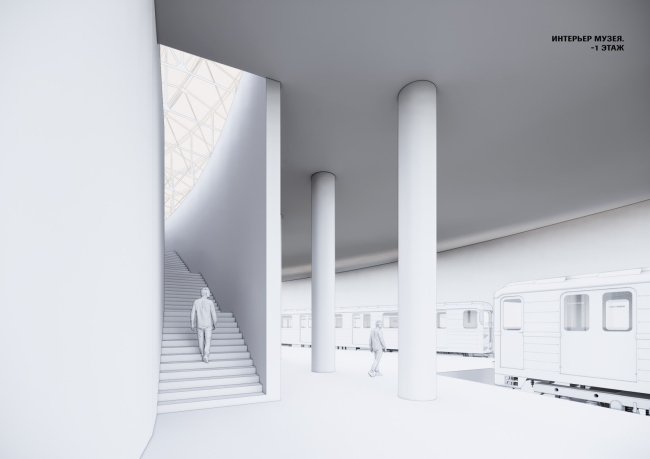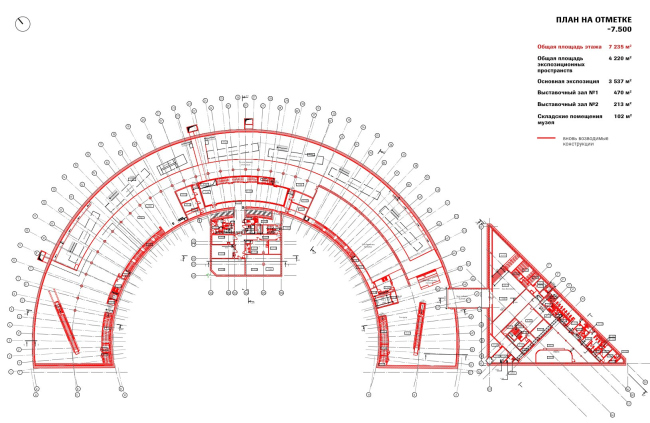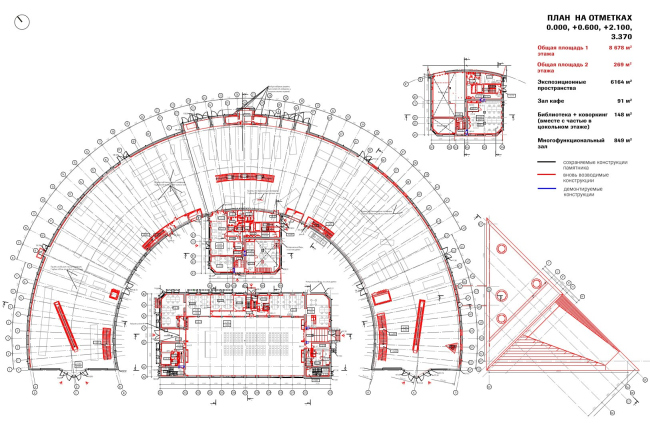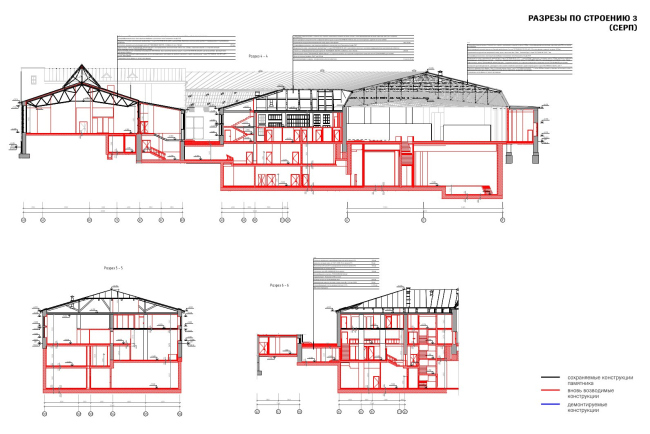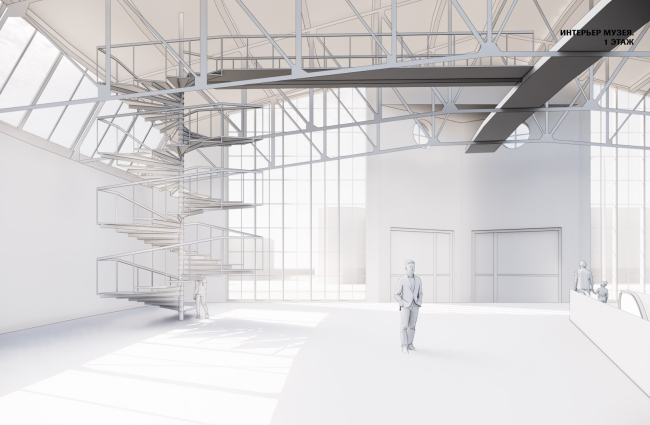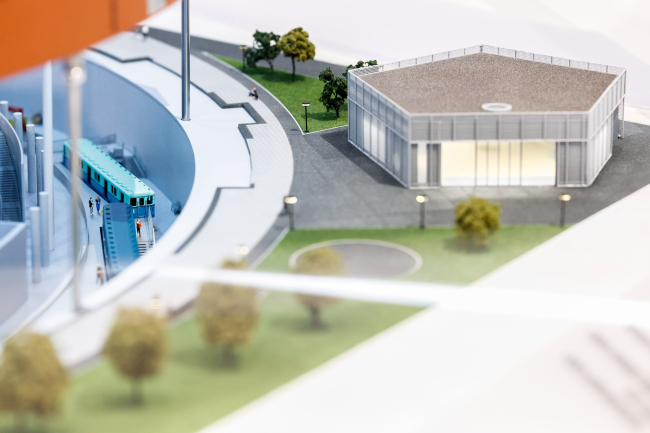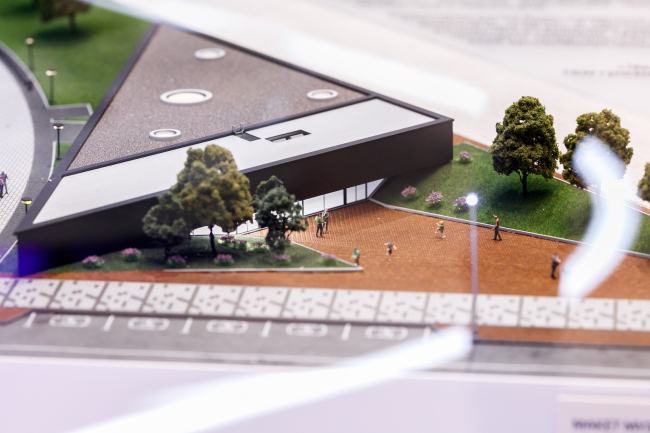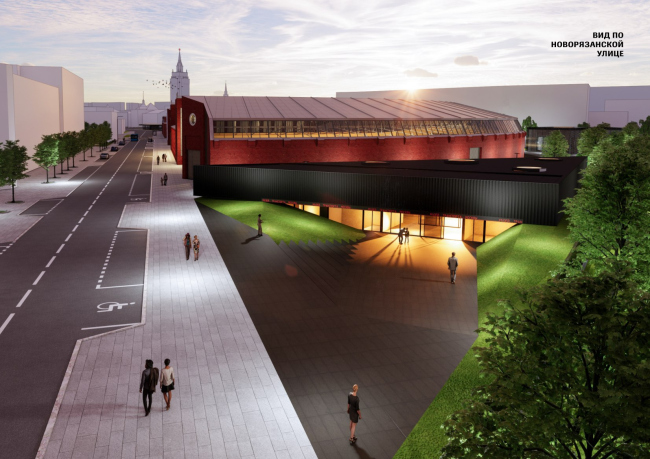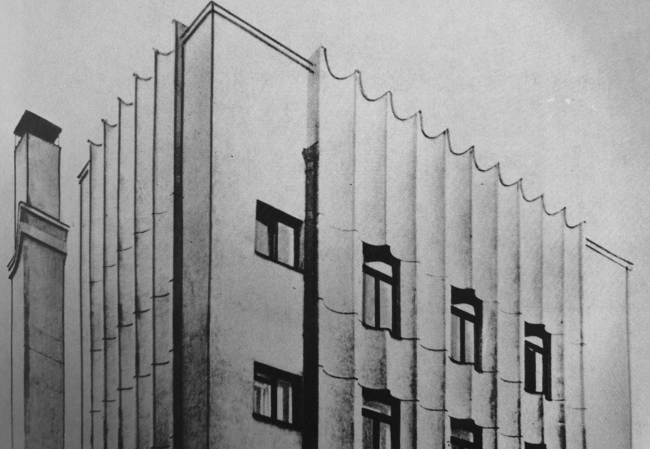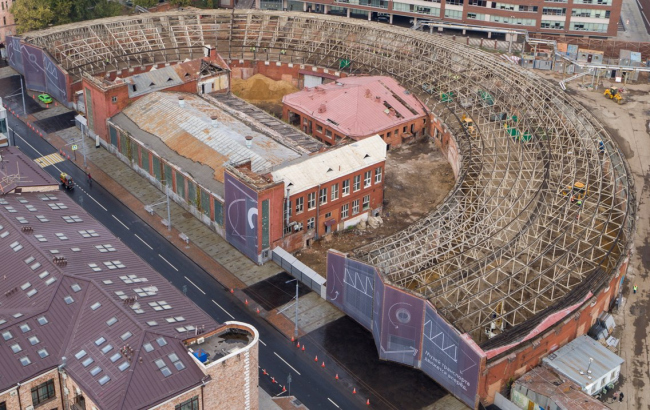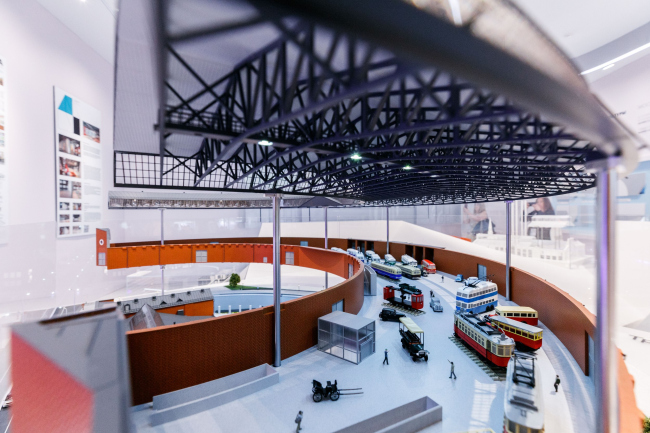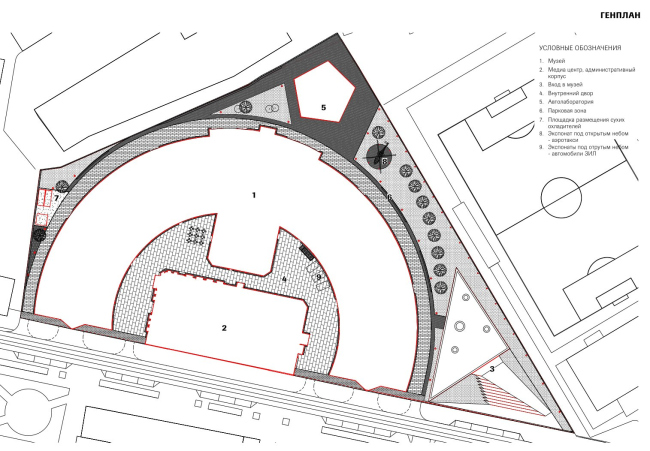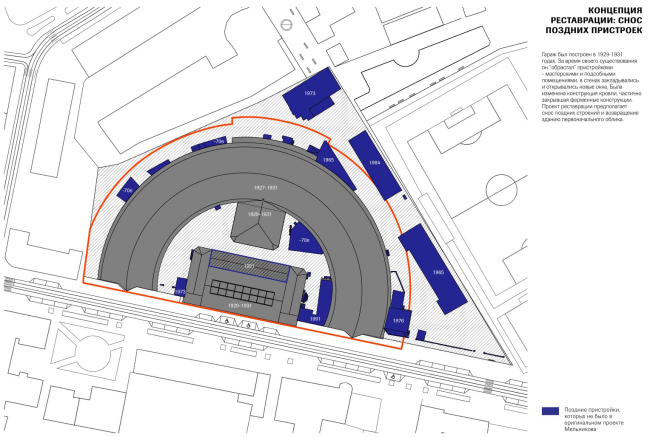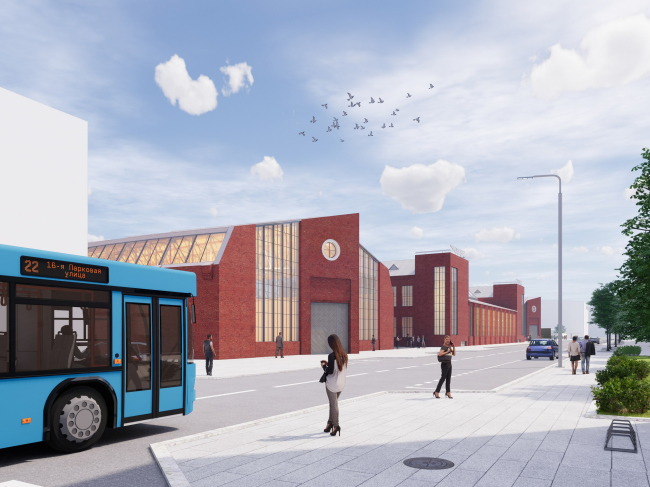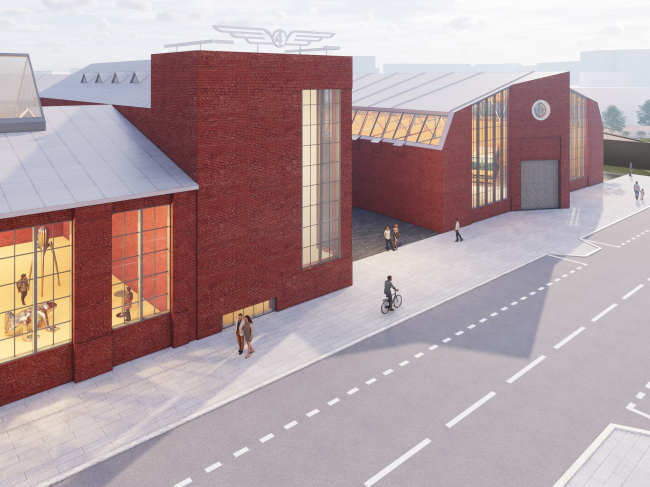|
Published on Archi.ru (https://archi.ru) |
|
| 07.06.2023 | |
|
Garage-Garage |
|
|
Julia Tarabarina |
|
| Studio: | |
| Meganom | |
|
Recently, Moscow saw the presentation of a project by Yuri Grigoryan, devoted to turning the truck garage on Novoryazanskaya Street, designed by Konstantin Melnikov, into the Museum of Moscow Transport. The project involves restoring the monument of architecture, adding a new underground floor and a new entrance, as well as a whole park. The implementation is already underway. This city has a habit of “presenting” architectural projects when they are in fact completed or nearly completed. This case is no exception – the reinforced wall underneath the monument has already been built, the restored structures are being assembled in their proper place – and we were shown a “sketch” project of transforming the truck garage, designed by Konstantin Melnikov at Novoryazanskaya Street, 27, into the Museum of Moscow Transport. Moscow Transportation Museum, conceptual design, 2020-2023Copyright: © Meganom/ provided by Moscow Transportation MuseumThe museum is planned to be open in 2024; the project of the first stage of restoration was approved by the Department of Cultural Heritage still in 2019. The work on the “adjustment project” began in 2020, and the decision to hand the garage over to the museum, according to its director, Oxana Bondarenko, was made in 2015-2017, even though the mayor only signed the appropriate decree in 2022. The banner “Nam po puti” (“We’re on the same road”) has been hanging for years now, and the work is underway. A cargo garage on Novoryazanskaya Street. Konstantin Melnikov, 1929-1931. In the process of remodeling, 06.2023Copyright: Photograph © Julia Tarabarina, Archi.ruA cargo garage on Novoryazanskaya Street. Konstantin Melnikov, 1929-1931. In the process of remodeling, 06.2023Copyright: Photograph © Julia Tarabarina, Archi.ruA cargo garage on Novoryazanskaya Street. Konstantin Melnikov, 1929-1931. In the process of remodeling, 06.2023Copyright: Photograph © Julia Tarabarina, Archi.ruA cargo garage on Novoryazanskaya Street. Konstantin Melnikov, 1929-1931. In the process of remodeling, 06.2023Copyright: Photograph © Julia Tarabarina, Archi.ruThe garage is a cultural heritage site of regional importance; according to the chief architect of the Transport Museum, Natalia Vorontsova, the protected status has been granted to the “composition of the architectural ensemble, materials and the composition of the facades, and the architectural and planning solutions”. The restoration is performed by the studio “Faros”; the museum exposition by Planet9 (design), Pitch (multimedia), and Solarsense (content). The main hero of the show, however, is the project of adjusting the building authored by Yuri Grigoryan and AB Meganom. We asked the author, and, yes, the Project and Project Documentation stages are also done by Meganom. Yuri Grigoryan at the press conference on 06.06.2023Copyright: Photograph © Julia Tarabarina, Archi.ruThe project includes 9,027 m2 of new construction: the Melnikov garage is essentially a horseshoe-shaped semicircle where the trucks were parked. The “semi-bagel” of the garage is one story high; it rests on the ground; the axis of circumference includes the building of the repair shop, it is two stories high, with an underground tier. According to the project, there is a new underground tier that is built underneath the “horseshoe” of the garage, and it will include a foyer, and the part devoted to the metro, which makes perfect sense. The visitors to the museum will get to the bottom tier through the new entrance – a triangular structure with an imposing attic, which is added to the garage from the east side. The former repair shop will host the museum’s media center. Moscow Transportation Museum, conceptual design, 2020-2023Copyright: © Meganom/ provided by Moscow Transportation MuseumMoscow Transportation Museum, conceptual design, 2020-2023Copyright: © Meganom/ provided by Moscow Transportation MuseumA model. View of the media center in the building of former machine shops. Moscow Transportation Museum, conceptual design, 2020-2023Copyright: © Meganom/ provided by Moscow Transportation MuseumThere will be no entrances to the upper tier of the permanent exposition – i.e. to the garage – from the ground; the visitors will ride escalators, which Yuri Grigoryan places in narrow spaces between walls. Moscow Transportation Museum, conceptual design, 2020-2023Copyright: © Meganom/ provided by Moscow Transportation MuseumMoscow Transportation Museum, conceptual design, 2020-2023Copyright: © Meganom/ provided by Moscow Transportation MuseumThere are stairs too – they stretch along the inner arc of the semicircle, and are also present in the sector-like communication node of the central part. The stairs are also delimited by a laconic “shell” wall – it actively builds the plastique of the interior space of the museum, distancing the attention of the viewer ascending to the upper hall from the foyer and the exposition of the lower tier. A little daylight will also get down through the stairs, but since there is a “subway” down there, then a lot of light is probably not that necessary according to the logic of the original design. Moscow Transportation Museum, conceptual design, 2020-2023Copyright: © Meganom/ provided by Moscow Transportation MuseumMoscow Transportation Museum, conceptual design, 2020-2023Copyright: © Meganom & Planet9 / provided by Moscow Transportation MuseumMinus first floor, elevation -7.5 m. Moscow Transportation Museum, sketch concept, 2023. New construction is marked in red.Copyright: © Meganom/ provided by Moscow Transportation MuseumPlan at the 0 elevation. Moscow Transportation Museum, sketch concept, 2023. New construction is marked in red.Copyright: © Meganom/ provided by Moscow Transportation MuseumSection view. new structures are marked in red. Moscow Transportation Museum, conceptual design, 2020-2023Copyright: © Meganom/ provided by Moscow Transportation MuseumThe elevators and stairs take the visitors upstairs, into the space of the “monument” garage itself. The bridges above, under the floor structures here are historical, but the spiral staircases leading to them are an addition by the architects. The exposition can thus also be viewed from above. Moscow Transportation Museum, conceptual design, 2020-2023Copyright: © Meganom/ provided by Moscow Transportation MuseumAt the back of the yard, a pentagonal (temporary) pavilion of educational vehicle workshops is planned for conducting master classes and children’s education sessions. 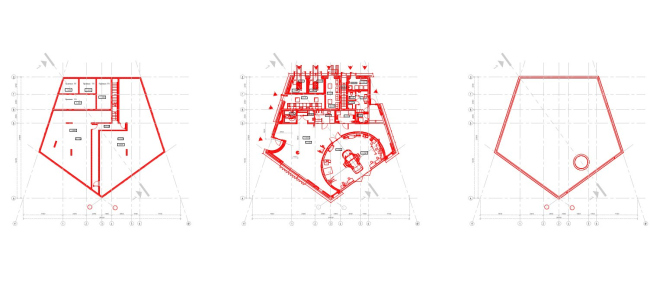 The auto laboratory. Moscow Transportation Museum, conceptual design, 2020-2023Copyright: © Meganom/ provided by Moscow Transportation MuseumA model. Moscow Transportation Museum, conceptual design, 2020-2023Copyright: © Meganom/ provided by Moscow Transportation MuseumLet’s return to the new entrance group, however. The auto workshop pavilion is pentagonal, while the entrance, which, I remind you, leads underground to the new ground floor, is triangular – in both cases, the simple but energetic geometry serves as a paraphrase of Melnikov’s work, who, as we remember, loved bold shapes. A model. Moscow Transportation Museum, conceptual design, 2020-2023Copyright: © Meganom/ provided by Moscow Transportation MuseumIn addition, the architect plans to cover the facade of the attic with specially made dark bricks of concave shape, which will yield a surface of laconic “flute” grooves – because (and I quote Yuri Grigoryan’s words here) Melnikov is essentially an Art Deco architect. Moscow Transportation Museum, conceptual design, 2020-2023Copyright: © Meganom/ provided by Moscow Transportation MuseumMoscow Transportation Museum, conceptual design, 2020-2023Copyright: © Meganom/ provided by Moscow Transportation MuseumBasically, the entrance turned out to be a modernist “beam”; such a solution is quite imaginable in some 1970s museum, but here I want to see concrete or metal for some reason. I wonder how the bricks will ultimately look. My colleagues were somewhat confused by this Art Deco statement, but to me it seemed largely correct. Melnikov, of course, is far from being the most typical representative, but he loved Art Deco (or did at some point), and he was always interested in the art of plastique. Looking for hereditary grooves, I opened Melnikov’s album – I found at least the Gosplan garage. Why not add grooves from one garage to another? And the half-grooves of the Intourist garage come to mind too. Konstantin Melnikov. The Gosplan Garage. ProjectCopyright: From the book: S.O. Khan-Magomedov. Konstantin Melnikov. Ì., 1990. Page 119.The restoration of the historical part is being done according to all the rules under the supervision of the Department of Cultural Heritage. According to Yuri Grigoryan, the brick repair covered about 7-8% of the masonry in the upper part, only where the masonry was severely damaged. In addition, when inspecting the building, the architects found wooden side windows somewhere upstairs under the trusses, which had been closed for a long time – it is planned to open them. It was decided to restore the metal trusses not on site, but in the workshop; now, I remind you, they are being installed. According to the chief architect of the Museum of Transport, about 10% of new metal had to be added in the process of mending, the rest was preserved, “including rivets”. It turns out that the public in December 2022 was worried for nothing. There is another, additional, story about the trusses. They are universally spoken of as the work of Vladimir Shukhov. This information goes back to Selim Khan-Magomedov’s book (1990), but according to Mark Hakobyan, who curated the 2019 Shukhov exhibition at the Museum of Architecture, there is no confirmation of Shukhov's involvement either here or in the Bakhmetev Garage – in the latter case, historians have studied the materials in the archive of the Central State Archive of Moscow, and the drawings there are signed by Melnikov, while Shukhov’s signature is nowhere to be found. Shukhov’s post-revolution works, Mark Hakobyan explains, are generally difficult to document: the sources are scarce, and you have to determine them by the type of construction: the mesh vault patented by Shukhov is more likely to be associated with him, but the great engineer was also engaged in calculations of simpler truss structures – like the cargo garage on Novolyazanskaya. Meanwhile, such a calculation could have been made by some other engineer. The constructions of the garage are quite simple: there is no special engineering beauty, which could be seen in the exhibition pavilions of the XIX century – after all, the task was rather technical, and the main advantage of the structures was that they covered the span of 35 m without supports and allowed trucks to maneuver more freely. By the way, at first 5-ton German trucks were parked in the garage, then Soviet “1.5-ton-trucks”, then, during the war, it served as a repair shop, and finally, after the war and until its closure, it was the 4th bus park. Garage on Novolyazanskaya Street in 2022. The structures have not yet been dismantledCopyright: Photograph: Mos.ru /A model. Moscow Transportation Museum, conceptual design, 2020-2023Copyright: © Meganom/ provided by Moscow Transportation MuseumAnother part of the project is landscaping. As it is customary nowadays, there is a special emphasis on it, especially since the museum is a public place and requires the appropriate space around it. To the east of the garage a park called Milyutinsky is planned – let’s not forget about the legendary Commissar. Besides, the alley-circumference between the “garage” museum and the former workshop (now the media center), will be opened for walks – and not to surround the museum with any fences at all. “The city will receive”, as they say nowadays, a new park, a quiet street, plus the improvement of Novoryazanskaya Street running near the museum. General Plan. At the top, there is a pentagon of workshops, to the right an entrance triangle and a park. In the center, there is the acr of the pedestrian stree. Moscow Transportation Museum, conceptual design, 2020-2023Copyright: © Meganom/ provided by Moscow Transportation Museumlater additions shown in blue. Moscow Transportation Museum, conceptual design, 2020-2023Copyright: © Meganom/ provided by Moscow Transportation MuseumMoscow Transportation Museum, conceptual design, 2020-2023Copyright: © Meganom/ provided by Moscow Transportation MuseumThus, the fears of the public turned out to be largely groundless: the garage is a monument, it is being restored, and the difficulties associated with the poor quality of technical construction (after all, the garage is just a garage) are being overcome. On the other hand, there is a lot of new construction in the project, a little less than half of the original area. It is not very clear why the project was shown so late – it would have been possible to calm everyone’s misgivings from the very start, wouldn’t it? One more thing. I think it would be nice if the Museum of Transport allotted a special room for an exposition devoted to Melnikov’s other garages, because – let’s not forget it – garages were one of Melnikov’s most frequently done projects. He designed two garages for Paris, one of them with cantilevered ramps over the bridge over the Seine – in both of them, back in 1925, he proposed the famous one-way traffic. No, it’s not the first time Melnikov had it on Novolyazanskaya; it’s the core idea in all of his garages – not to make the car egress. The words written by Melnikov while designing a garage for English buses on Ordynka (not implemented) are remarkable and very textured: “... it was neither caprice nor autocratic, but the daring power of beauty to stop wasting millions on ugly things”. Moscow Transportation Museum, conceptual design, 2020-2023Copyright: © Meganom/ provided by Moscow Transportation MuseumIn Moscow, Melnikov designed five garages, four of which were actually built: bus Bakhmetyevsky, cargo Novovyazansky, Intourist garage on Suschevsky Val, and Gosplan garage on Aviamotornaya. All of them were with straight-through traffic (or essentially one-way), only organized differently: Bakhmetyevsky garage for the sake of convenience of buses’ movement received slanted contours, and Novobiazansky – a horseshoe-shaped plan, which, by the way, if we look at the map of the district as a whole, is very similar, in shape and size, to the steam locomotive circular depots of the XIX century. For example, 300 meters from the Novoryazansky Garage, a slightly smaller, but very similar in parameters, depot of the 1890s – was it the source of inspiration that helped the great architect Melnikov to cope with the triangular shape of the site? Who knows? It is clear that there were locomotives, which were placed along the radii to reconnect to trains, and here were trucks, but still: the garage on Novoryazanskaya is quite in line with the search for transportation architecture. Another thing that comes to mind here is the museum of the Oktyabrskaya railway, which Nikita Yavein designed in the railway depot in St. Petersburg (open since 2017 ). You can still feel some rhyme arising between the two large transport museums. Meanwhile, the project of the Transport Museum in the Melnikov’s Garage is grand-scale, and unique to a large extent. At the same time, however, it does fall in line with modern trends. Today, Novoryazanskaya Street is being actively developed; gradually, it stops being the “backyard” of the “square of three railway stations”, and already a restaurant complex opened on it. The complex is called “Depot” (it is opened in another depot, the tram one, not the steam engine one we talked about before), and the street is being paved with granite – for all intents and purposes, the museum will also soon be completed. And life will be beautiful then. What’s next? A museum of private garage construction? Konstantin Melnikov. garage over Saine. Project. 1925Copyright: From the book: S.O. Khan-Magomedov. Konstantin Melnikov. Ì., 1990. Page 103. |
|



